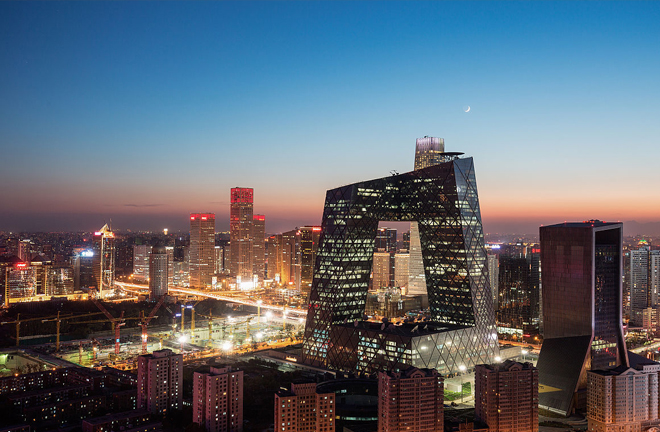Report: Chinese cities increasingly competitive worldwide

The competitiveness of Chinese cities has increased rapidly, with 21 of them entering the global top 100 rank in 2017, according to a recent report. (PHOTO: CFP)
The competitiveness of Chinese cities has increased rapidly, with 21 of them entering the global top 100 in 2017, according to a recent report.
Jointly released by the National Academy of Economic Strategy at the Chinese Academy of Social Sciences (CASS) and the UN Human Settlements Programme (UN-Habitat), the 2017-2018 Global Urban Competitiveness Report, titled “Housing Prices: Changing World Cities,” was released at the Global Urban Competitiveness Forum in Guangzhou on Oct. 30. The forum was part of a series of activities for the World Cities Day, which fell on Oct. 31.
The report measures the economic competitiveness index of more than 1,000 cities around the world. New York, Los Angeles, Singapore, London, San Francisco, Shenzhen, Tokyo, San Jose, Munich and Dallas made the top 10 list.
According to the report, Hong Kong, Shanghai, Guangzhou and Beijing were among the top 20. Among the top 100, first-tier cities in China performed excellently, and the performance of some competitive second-tier cities was also spectacular.
The report pointed out that the rise of innovative cities and urban centers in emerging economies has broken the established global city pattern. Information technology is becoming the principal force driving global city development, according to the report.
The report also sheds light on global sustainable competitiveness. Data show that despite the thriving of city clusters in developing countries like China, India, Brazil and Indonesia, only a small number of central cities in these countries made it to the top 100, but the BRICS nations are becoming an important part of global connectivity, according to the report.
In a written address to the forum, CASS President Wang Weiguang noted that today’s world is undergoing fundamental changes.
“On one hand, globalization is reaching a new level despite some ups and downs, emerging economies represented by China are growing rapidly and the global landscape has experienced and will continue to see more changes to come,” Wang said.
“On the other, technological innovation is striving to come up with breakthroughs. It has changed and will continue to reshape the forms and landscape of global economy,” he added.
Wang said in the 21st century, cities have become the mainstream carriers and platforms for human activities, adding that globalization, technology innovation and changes into the global economic landscape will determine the future of global cities and urban system.
Joan Clos, under-secretary-general of the United Nations and executive director of the UN-Habitat, said in his keynote speech that urbanization is an irreversible trend and an inevitable path for global development, as exemplified by the growth of China in the past decades.
Urban development relies on industrial transformation during which value will be distributed and accumulated, Clos said. While value distribution is inseparable from factors related to city value creation, such as geographical environment and government policy, value accumulation is realized through production and industrial distribution, which are subject to the influence of labor, capital and knowledge.
A city will develop well if it strikes a good balance between value distribution and accumulation, Clos said.
